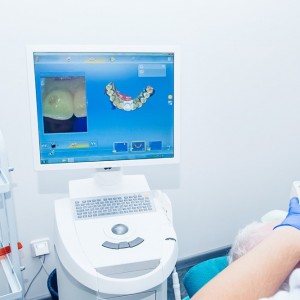
Direct or indirect restorations for endodontically treated teeth?
Lorenzo Breschi
INTRODUCTION
Endodontically treated teeth are more susceptible to biomechanical failure compared to vital teeth, mostly due to the amount of internal tooth structure that is removed during endodontic treatment and the loss of coronal hard tissue. The best way to restore endodontically treated teeth has been extensively discussed but is still controversial concerning the best type of final restoration. A systematic review published on the 2018 Journal of Adhesive Dentistry in March, compared the treatment outcomes of direct and indirect permanent restorations, analysing the survival of tooth-restoration complex and the restorative and endodontic success, aiming to provide clinical suggestions.
MATERIALS AND METHODS
The authors reviewed, after an electronic search of published English literature in different databases, 3497 records, of which only 9 met the inclusion criteria.
RESULTS
Traditionally, most clinicians prefer to use posts followed by crown restorations for endodontically treated teeth, however, full-coverage crowns may not be necessary. According to some studies in vital teeth, after an extensive damage by caries or endodontic treatment, crowns are still crucial to provide enough coronal protection in endodontically treated teeth. Direct composite restorations are mainly indicated for teeth with minimal or moderate tooth structure loss. However, the decision on whether to place a crown or a partial-coverage restoration should also depend on functional requirements and the amount of remaining tooth structure.
CONCLUSIONS
Based on current evidence, there is a weak recommendation for direct restorations to restore endodontically treated teeth, especially for teeth with extensive coronal damage.
Indirect restorations consisting mostly of crowns have a higher short-term (5-year) and medium-term (10-year) survival than direct restorations. Indirect restorations also showed better aesthetic, functional, and biological properties, but no difference in short-term (≤ 5 years) restorative success or endodontic success.
For additional informations:
Direct and Indirect Restorations for Endodontically Treated Teeth: A Systematic Review and Meta-analysis
 Related articles
Related articles
Restorative dentistry 03 November 2025
The worldwide interest of both dentists and patients in esthetic dentistry has affected decision-making in dental practice.
Restorative dentistry 12 September 2025
Traumatic tooth injuries involve function and aesthetics and cause damage that range from minimal enamel loss to complex fractures involving the pulp tissue and even loss of the tooth crown.
The purpose of restorative dentistry is to restore and maintain health and functional comfort of the natural dentition combined with satisfactory aesthetic appearance.
Oral surgery 15 July 2025
The influence of patients' decisions on treatment planning in restorative dentistry
As part of treatment planning, options are presented to patients by dentists. An informal discussion takes place involving a cost-benefit analysis and a treatment plan is agreed.
Restorative dentistry 01 July 2025
Advances in CAD/CAM Technology for Chairside Restorative Dentistry: A Workflow Analysis
Chairside CAD/CAM technology has revolutionized restorative dentistry, offering streamlined workflows and improved patient outcomes.
 Read more
Read more
Much like EMTs rushing to the scene after an accident, stem cells hurry to the site of a skull fracture to start mending the damage. A new finding has uncovered the signaling mechanism that triggers...
Products 05 November 2025
SimplyTest has launched a groundbreaking saliva-based test to detect high-risk strains of oral human papillomavirus (HPV), a major cause of oropharyngeal cancers.
News 05 November 2025
Perimetrics, Inc., a dental technology company pioneering quantitative diagnostics, announced today that the U.S. Food and Drug Administration (FDA) has granted clearance for the InnerView...
News 05 November 2025
On October 15, open enrollment for Medicare began nationwide. Hundreds of thousands of seniors in New Jersey will once again face the challenge of finding the right Medicare coverage, including the...
Digital Dentistry 04 November 2025
Digitalisation is an expanding field in dentistry and implementation of digital teaching methods in dental education is an essential part of modern education.















